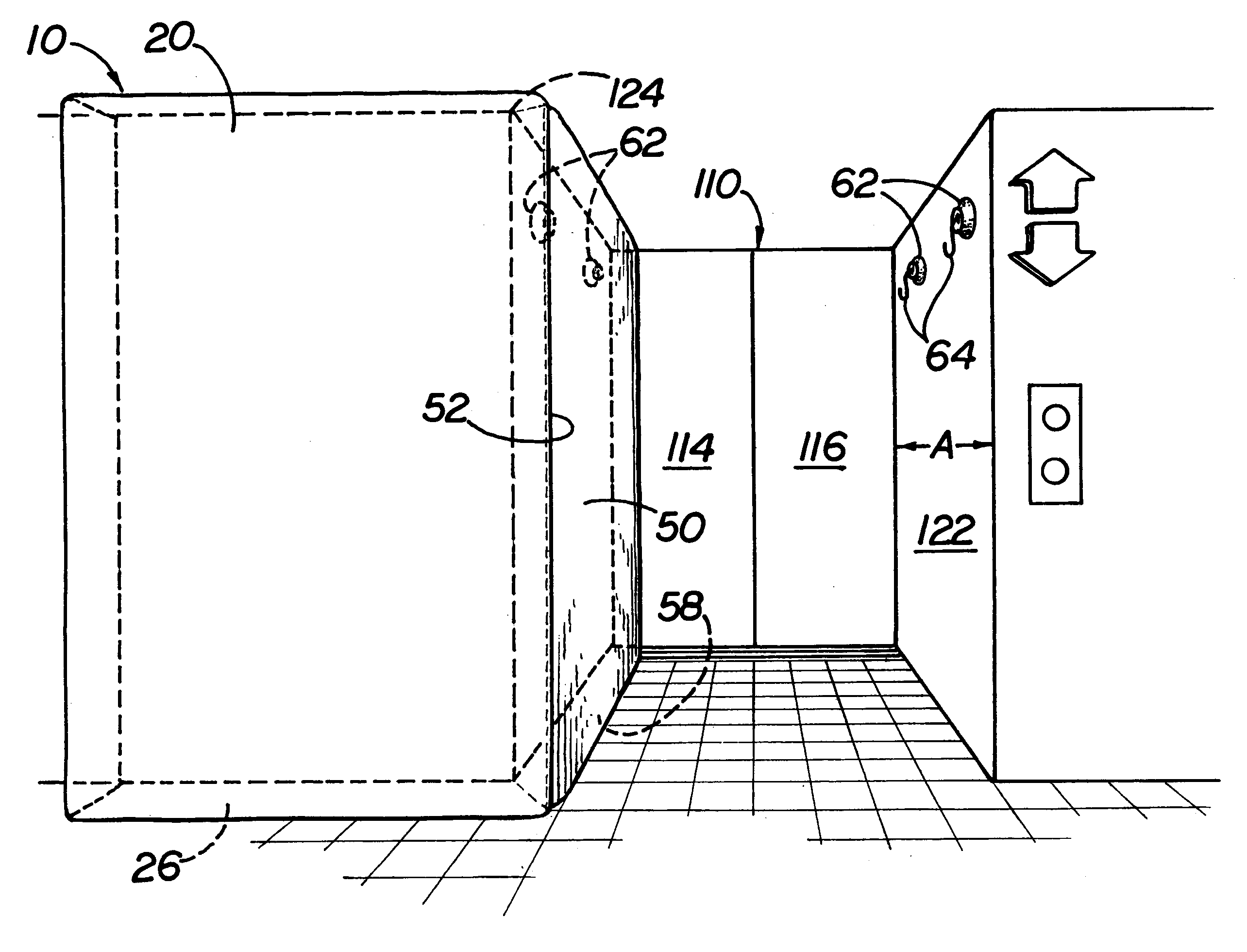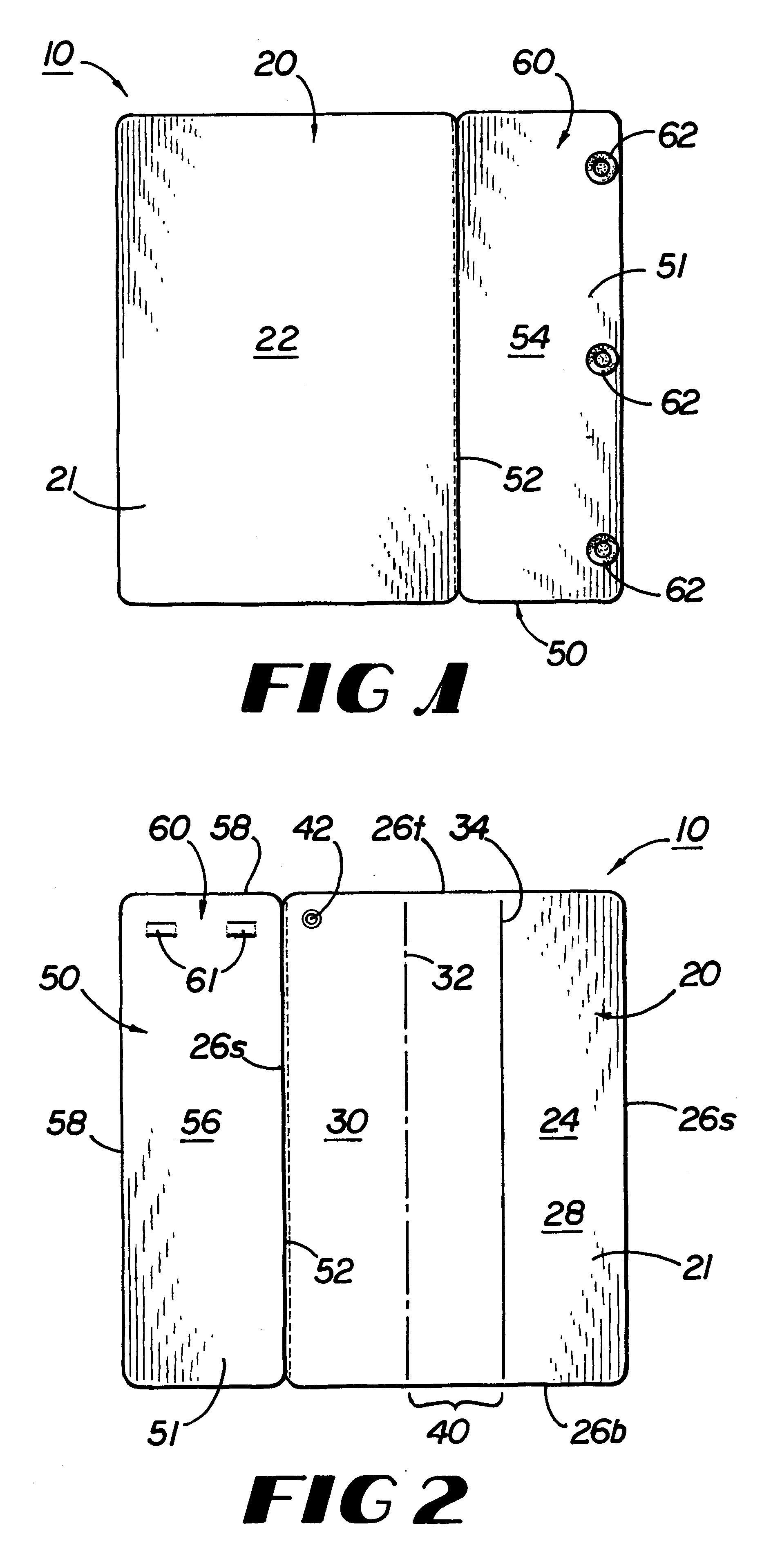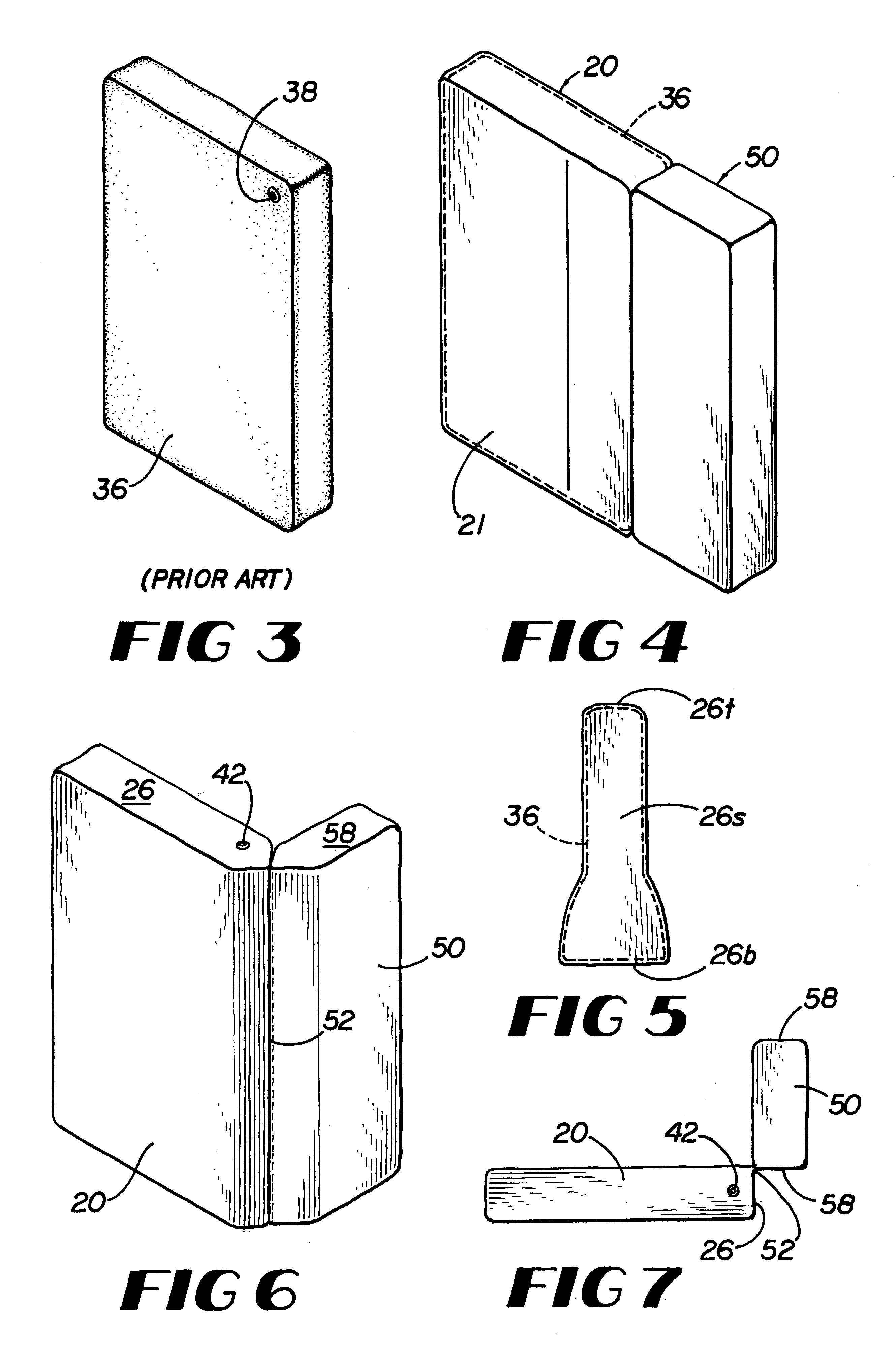Entryway protector
a technology for entering doors and windows, applied in the field of barriers, can solve the problems of damage to the surface of the building's walls, door jambs, and door jambs, and the damage of the moving equipment and furniture, and the cost of repairing damaged walls, doors and door jambs, typically falls on the building owner, the landlord or the building managemen
- Summary
- Abstract
- Description
- Claims
- Application Information
AI Technical Summary
Benefits of technology
Problems solved by technology
Method used
Image
Examples
Embodiment Construction
Referring now in detail to the drawing figures, wherein like reference numerals represent like parts throughout the several views, FIG. 1 shows a front view of a preferred embodiment of the present entryway protector 10. Preferably, the entryway protector 10 comprises a main section 20, a minor flap 50 and a securing component 60.
As illustrated in FIGS. 1 and 2, main section 20 comprises a sheet or cover 21 having a front face 22, a back face 24 and top, side and bottom edge walls 26t, 26s, 26b. Main section 20 preferably is rectangular in shape, but can easily incorporate a variety of other shapes and sizes. The front face 20 and back face 24 of main section 20 are separated from one another by edge walls 26t, 26s and 26b. Cover 21 can be designed as an integral cover 21, or faces 20, 24 and walls 26 can be formed of separate sections, and woven, or joined by other known means, together to form cover 21. The width of edge walls 26 define the depth of main section 20, or the amount ...
PUM
 Login to View More
Login to View More Abstract
Description
Claims
Application Information
 Login to View More
Login to View More - R&D
- Intellectual Property
- Life Sciences
- Materials
- Tech Scout
- Unparalleled Data Quality
- Higher Quality Content
- 60% Fewer Hallucinations
Browse by: Latest US Patents, China's latest patents, Technical Efficacy Thesaurus, Application Domain, Technology Topic, Popular Technical Reports.
© 2025 PatSnap. All rights reserved.Legal|Privacy policy|Modern Slavery Act Transparency Statement|Sitemap|About US| Contact US: help@patsnap.com



